Developing Android apps with Kotlin involves a seamless collaboration between several key components:
Java Development Kit (JDK),
Gradle build system
Android Kotlin runtime.
In this guide, we will explore why JDK version 17 is critical to modern Android development, how it fits into the app-building process, and the practical steps needed to ensure your development environment is configured correctly.
Why the JDK Matters
The Java Development Kit (JDK) is the foundation for all Android development.
It is responsible for compiling your Kotlin code, managing dependencies, and packaging your application.
For modern Android projects, JDK 17 is the recommended version. Why? Because it is the latest Long-Term Support (LTS) release, ensuring compatibility, stability, and access to cutting-edge Java features.
Using the correct JDK version aligns every stage of the app-building process—from writing Kotlin code to running it on an Android device.
Mismatched or outdated JDK versions can lead to compilation errors, runtime issues, and missing features.
By understanding the role of the JDK, we can ensure a smoother development experience.
Setting Up Your Environment
Let’s get started by ensuring your development environment is ready for JDK 17:
Check Your Current JDK Version: Open a terminal or command prompt and run: Command Wi ndow:
java --version
The output should display JDK 17. If it doesn’t, proceed to the next step. Download and install JDK 17 from trusted sources like: Follow the installation instructions for your operating system. Configure the JAVA_HOME environment variable to point to your JDK 17 installation directory. Add JAVA_HOME/bin to your system's PATH to ensure the terminal can locate the JDK. Verify Your Setup in Android Studio: Open Android Studio and navigate to File > Project Structure > SDK Location. Set the Gradle JDK to your JDK 17 installation directory. Test the setup by creating or opening a simple Android project. Confirm it builds successfully without errors. Connecting the Dots: JDK, Gradle, and Kotlin
Now that our environment is configured, let’s dive deeper into how the JDK interacts with Gradle and Kotlin to power Android app development.
The JDK on Your Host Operating System: The JDK provides the essential tools to compile Kotlin code into JVM bytecode, which is then converted to DEX (Dalvik Executable) files for Android devices. Annotation processing tools like kapt (used by libraries such as Room) rely on the JDK for generating boilerplate code during compilation. Gradle as the Build Orchestrator: Gradle uses the JDK to manage dependencies, compile code, and package the app into an APK. Your project’s build.gradle.kts file specifies the Java version and Kotlin target version to ensure compatibility:
compileOptions {
sourceCompatibility = JavaVersion.VERSION_17
targetCompatibility = JavaVersion.VERSION_17
}
kotlinOptions {
jvmTarget = "17"
}
Gradle relies on the JDK to resolve dependencies, such as Room or Retrofit, and to process annotations for generating database code. Kotlin Runtime on Android: The Kotlin compiler (kotlinc) translates your code into JVM-compatible bytecode, optimized for Android’s runtime system. The Android Runtime (ART) executes the final application, leveraging features like coroutines, sealed classes, and extensions. Why JDK 17 Matters
Let’s explore the specific reasons why JDK 17 is essential for Android development:
Gradle 7.x+ is optimized for Java 17, ensuring modern annotation processors (like kapt) work efficiently. Using an older JDK can break Gradle tasks or cause errors during annotation processing. Room Database and Annotation Processing: Libraries like Room use annotation processors to generate database access code. JDK 17 supports advanced reflection APIs and bytecode optimizations that make annotation processing faster and more reliable. Kotlin fully supports JVM 17, unlocking better performance and access to modern features like: Sealed classes for better type safety. Improved switch expressions for cleaner logic. Attempting to use these features with an older JDK will result in compilation errors. Performance Enhancements: JDK 17 introduces improvements like: Better garbage collection (G1GC), which is critical for coroutine-heavy apps. Faster reflection for libraries like Room and WorkManager. Optimized bytecode for functional programming constructs like lambdas. Stability and Future-Proofing: As an LTS release, JDK 17 is supported and maintained for years, ensuring long-term compatibility with Android Studio and Gradle. What Happens if We Use an Older JDK?
Using an outdated JDK (like Java 8 or 11) introduces several risks:
Compilation Errors: Gradle tasks like kapt may fail due to mismatched bytecode or unsupported annotations. Runtime Issues: Apps may crash when libraries rely on newer reflection APIs or annotation processors. Missed Features: Kotlin features like coroutines with Room or sealed classes will not work as expected. Driving It Home
By using JDK 17, we ensure:
Compatibility with modern Android tools and libraries like Room. Access to Advanced Java Features that improve code readability and performance. Optimized Runtime Performance through better garbage collection and bytecode execution. Stability and Support as part of Java’s long-term support roadmap. JDK 17 isn’t just a requirement—it’s the key to unlocking the full potential of Android Kotlin development. By understanding its role, we can build better apps, troubleshoot issues with confidence, and stay ahead in a rapidly evolving field.
Let’s build with confidence, knowing our tools are working at their best!
